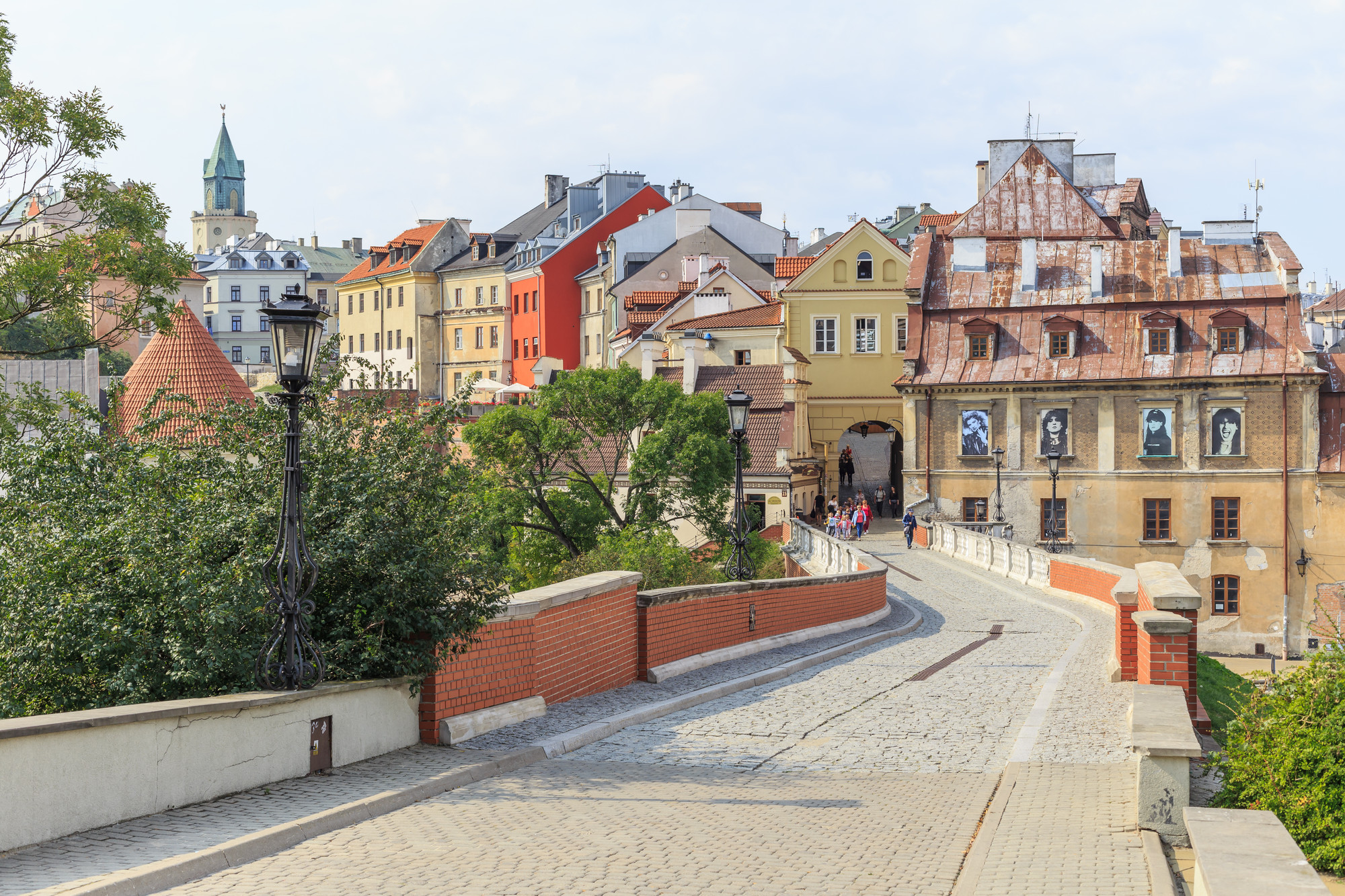
Lublin's unique heritage has resulted in different superstitions being associated with different landmarks, for which reason the Lubelskie region is often referred to as the ‘land of legends’. If you're travelling with children and they're not at the same level of appreciation as their elders, pay attention to the 🐐 that appear below! They offer a colourful tale behind some of Lublin's key sites!
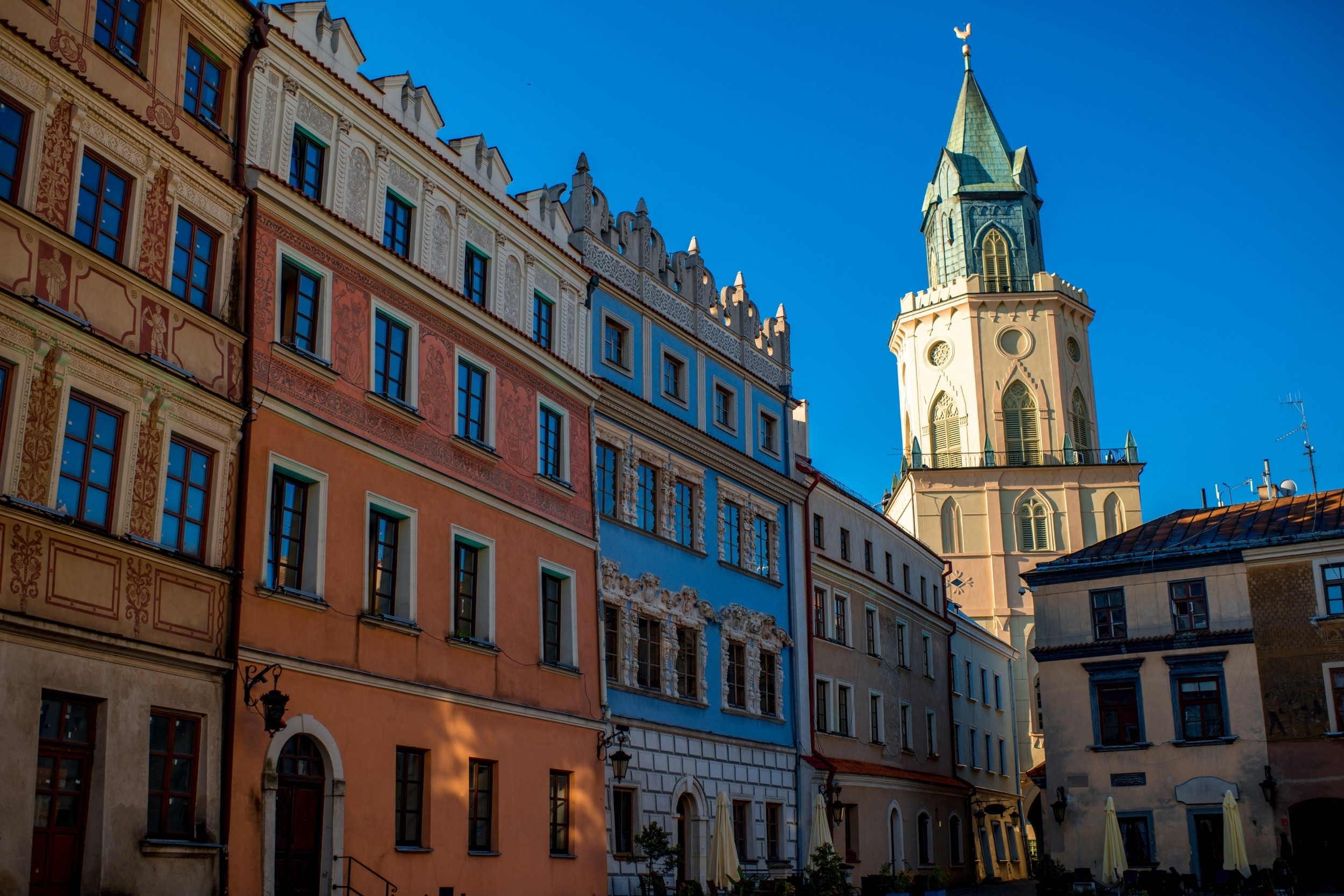
Lublin Old Town
After arriving in Lublin, your first port of call should be, without any detours, a visit to the historic centre. Founded in medieval times, Lublin’s old town boasts a collage of architectural patterns, dating primarily from the late Renaissance. Other features include two 14th-century gateways, the highlight of which being the Kraków Gate - a postcard favourite. The town square houses are mostly built in renaissance style, and recent renovations have restored many of the buildings to their former glory. With a generous 70% of these structures surviving the destruction of WWII, the old town is a wonderful glimpse into old Poland, and largely free from the buskers and kebab signs that fill Poland’s more travelled hotspots. Most of the top attractions in Lublin are located within this district, if not a short walk away!
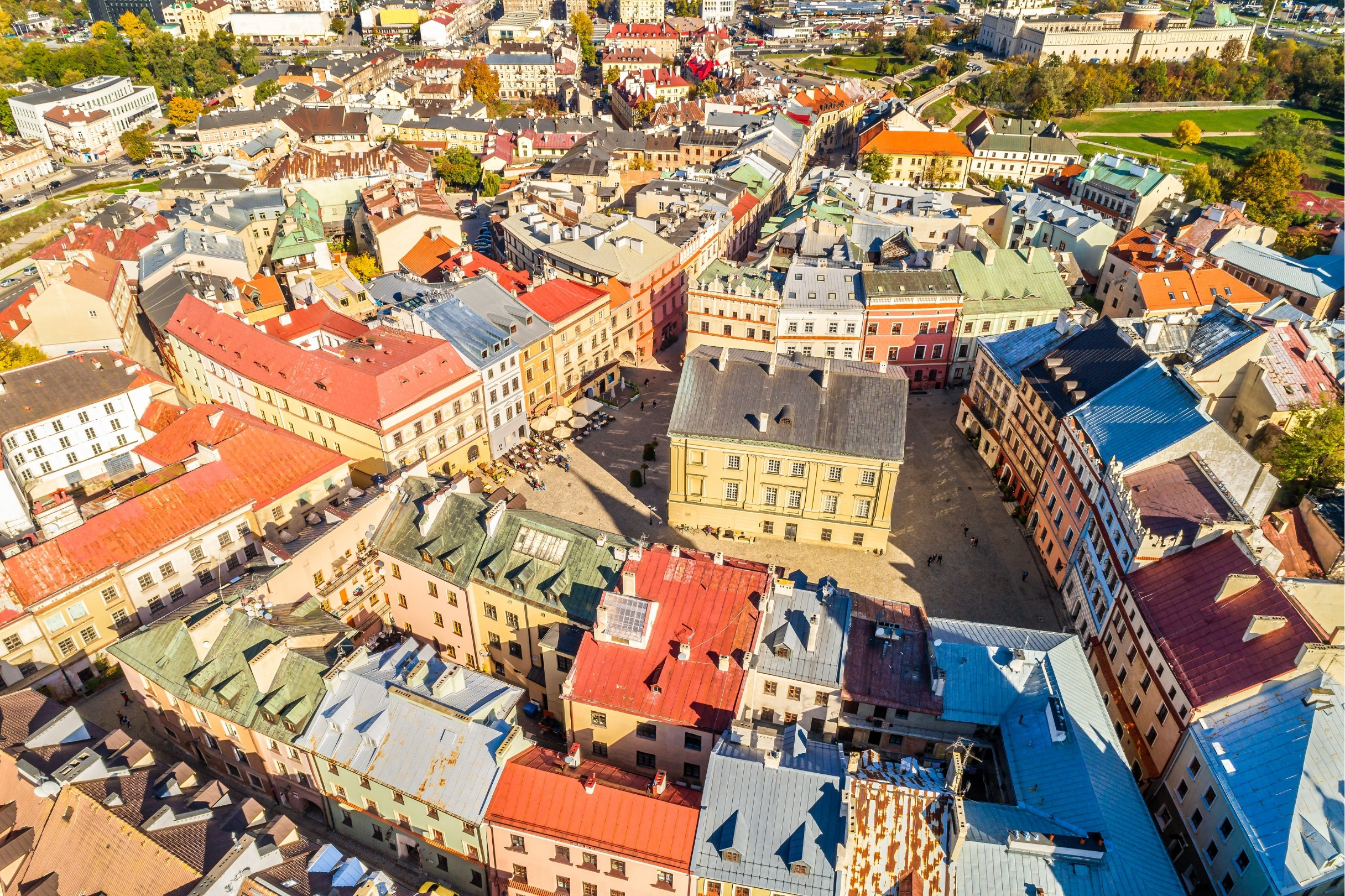
A lap around the picturesque rynek (ENG: Market Square) will reveal a number of great spots for drinking and dining. Notable mentions include Jewish cuisine at Mandragora and Słodka, a fantastic art-deco Polish restaurant called Niepospolita, and a quaint little coffee spot at Akwarela. Smack back in the middle is the Crown Tribunal Building, which is a starting point for the immensley-popular Lublin Underground Trail. Whist exploring through the narrow cobblestone laneways, you will eventually stumble across one of two imposing churches that reside within the old city limits. The first is the Dominican Basilica and Monastery at the end of ul. Złota, dated from the mid 1300s, and in possession of a fantastic painting depicting the fire of Lublin in the 18th century. A block to the south-west, the Archcathedral can be found, featuring the Trinitarian Tower that offers the best views of the old centre from above! Down towards Grodzka Gate and Lublin Castle, you can drop in at Browar Grodzki, a brewery-restaurant that offers stunning views to the east.
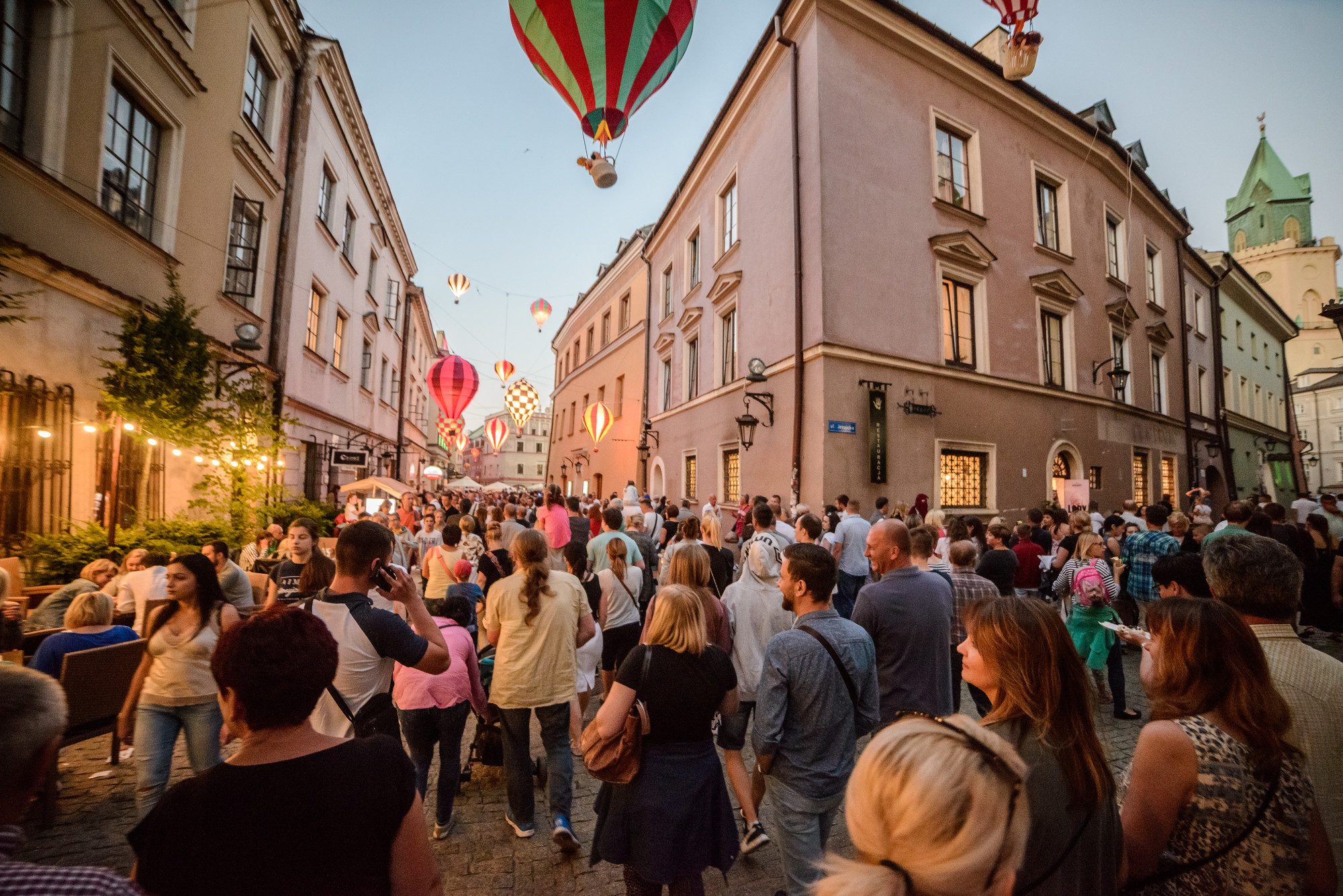
Photo by J. Scherer / Photo by the Presidential office - Marketing of the city of Lublin.
🐐 Numerous legends are associated with the old centre in general. The oldest of these is that of a three-headed dragon, known back in the day as a 'viper' who emerged from an oak grove in the Bystrzyca river valley and chose to live under the city. The viper was believed to have been responsible for bringing the rain, which was essential weather for ensuring a good harvest, as well as guarding the city from dead souls who roamed the land. Offerings to appease the three-headed beast included milk, honey and grain. Viper motifs can be found all over the city on doorfronts, and ul. Żmigród translates as Vipertown Street. 🐐 The other legend is attached to the fancy blue tenement house at Rynek 12, which was the home of Mayor Konopnica in the 16th century. His beautiful daughter, Basia, fell in love with a poor nobleman's son named Jan Rudnicki, a betrothal of which Mayor Konopnica did not approve. Rudnicki, not willing to accept Konopnica's decision, swept up Basia after mass on Christmas Eve and escaped into an oncoming blizzard. While most stories that play out like this have a tragic, ghostly ending, this one is quite the opposite - Basia and Jan Rudnicki lived happily ever after on the Rudnicki estate, despite not gaining forgiveness from old man Konopnica!
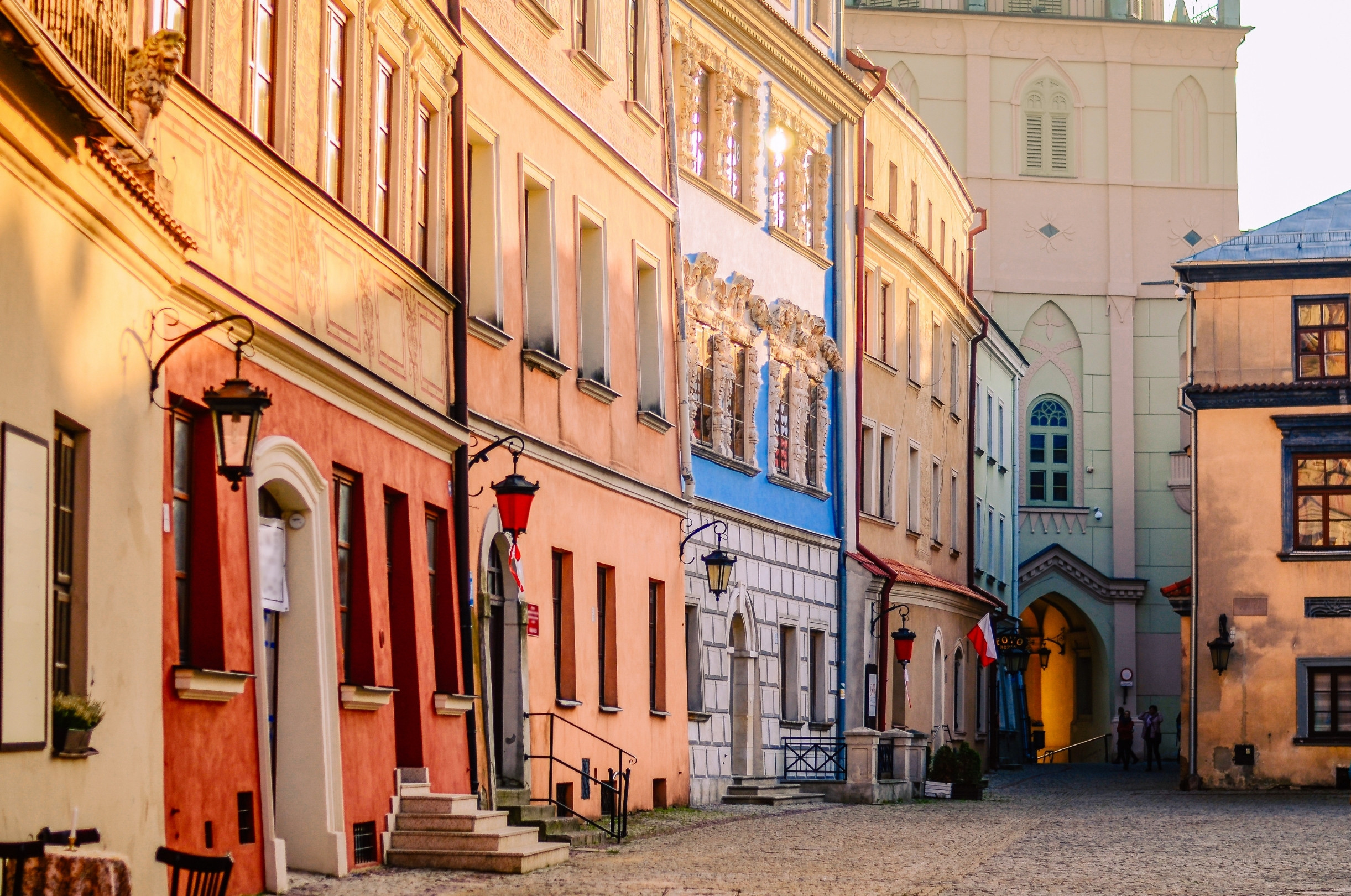
Krakowska Gate
Krakowska Gate (PL: Brama Krakowska) is a 14th-century gate and defensive tower complex that provides access to the Old Town in Lublin. Often referred to historically as the 'Upper Gate', with Grodzka Gate on the other end being the lower gate of the old centre, the westward road leading out of the city follows the historic trail towards the city of Kraków, hence the gate's namesake as well as the road and district on the outside of the old town - Krakowskie Przedmieście (ENG: Kraków District). The gate and defensive walls around the Lublin old town were first built in 1341, in an attempt to stave off raids from Tatars, Ruthenians and other local bandits. A drawbridge used to be attached to front, which dropped over a moat. That particular state-of-the-art defensive measure was filled in around the 17th century!
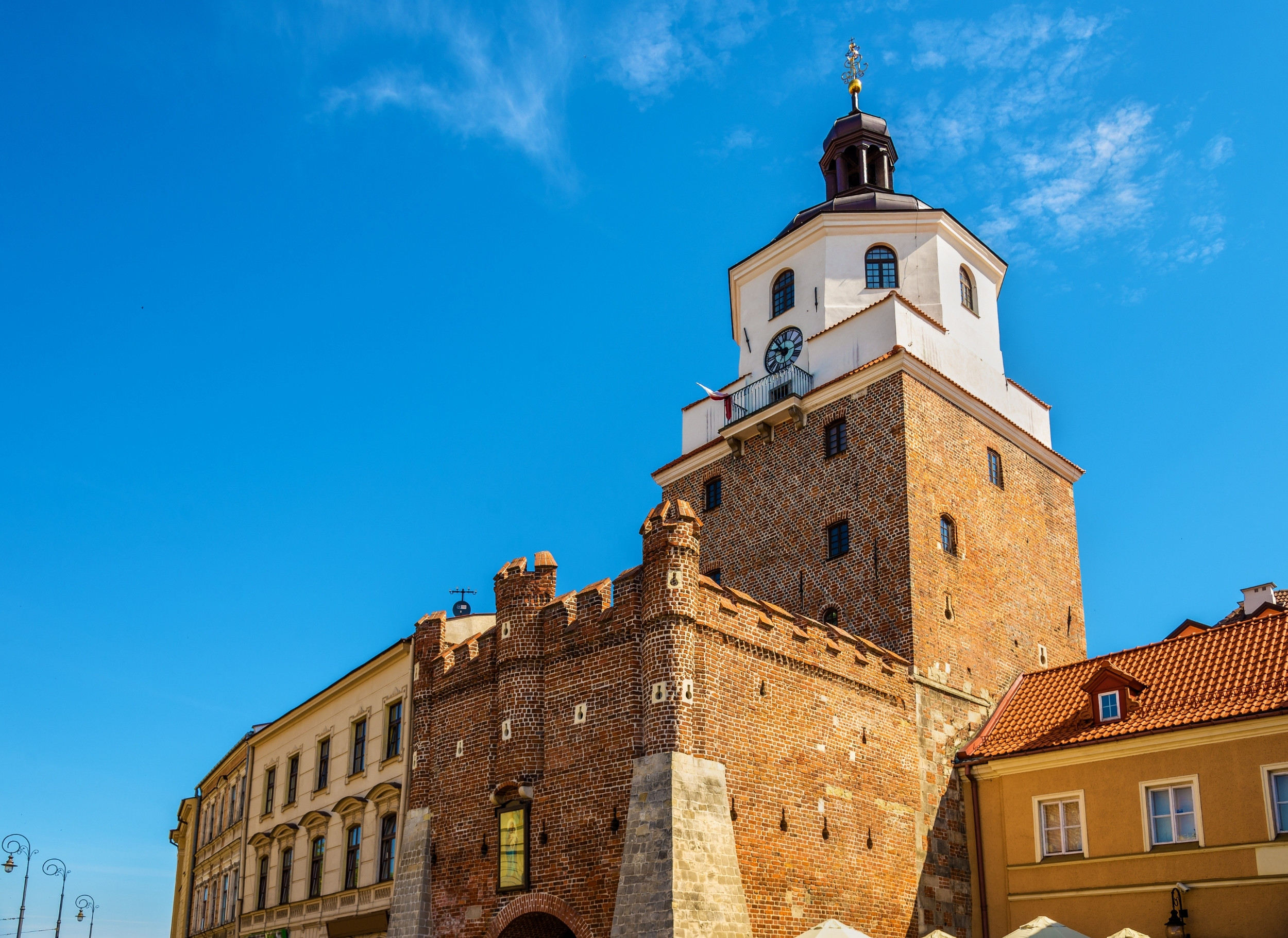
Perhaps the most iconic historical structure of the city, the brick part you see today is dated from the 17th century. The white clock tower and dial dated from the 19th century, 🐐 and the former tower master is alleged to have taken out his anger out on the clock by throwing bottles at it. Subsequently, the clock became 'drunk' and began to show the time incorrectly, often with huge deviations from the actual time of day. The old mechanics have since been replaced with an electronic system, which seems to have sobered thing up quite a bit! Nevertheless, the Museum of History of the city of Lublin, which can be found inside, allows you to see some of the intricate clockwork technology, the kind that was once used up on the tower's original dial. The view of Krakowskie Przedmieście from up top is not half bad as well!
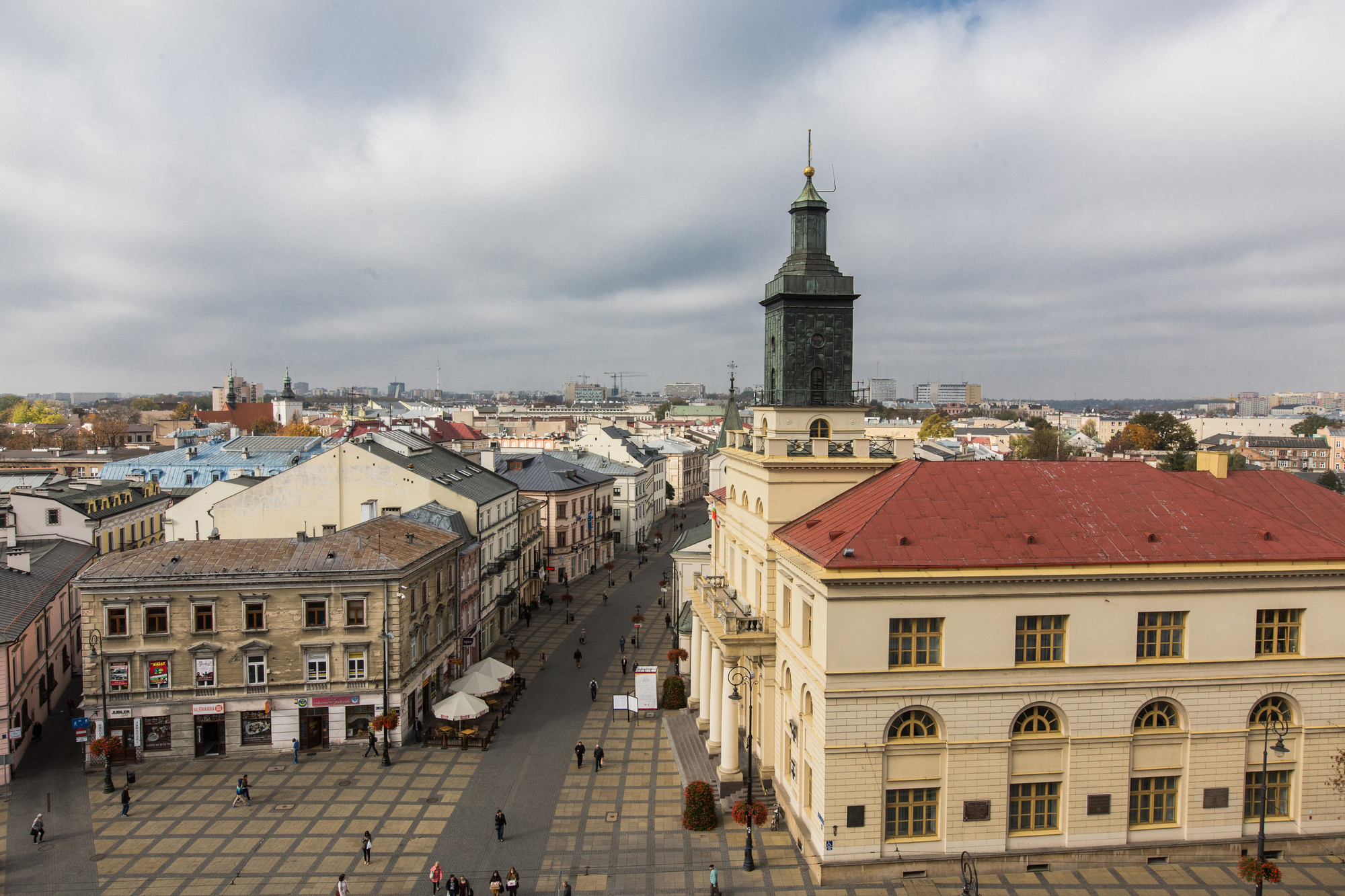
Po Farze Square
Plac Po Farze (ENG: Square along the parish) was created after the demolition of the Parish Church of St. Michael the Archangel. 🐐 The area is associated with a key legend of the city, dating back to the mid 13th century, during the time of Krakowian ruler Prince Leszek II the Black. The inhabitants of Lublin, suffering from frequents attacks from pagan tribes, appealed to Leszek to bring his army and submit their enemies. When Leszek and his forces arrived in Lublin, the pagans had retreated from the city upon hearing news of his arrival. Leszek halted the march and decided to nap in the shade of an oak tree. In his dream, Saint Michael the Archangel descended from heaven and ordered the prince to continue pursuing the pagans. He did so and his army defeated them without issue. Leszek returned to Lublin and ordered that the place where he had been visited by Saint Michael. It is here that the church was built and the oak tree was used to make the altar.
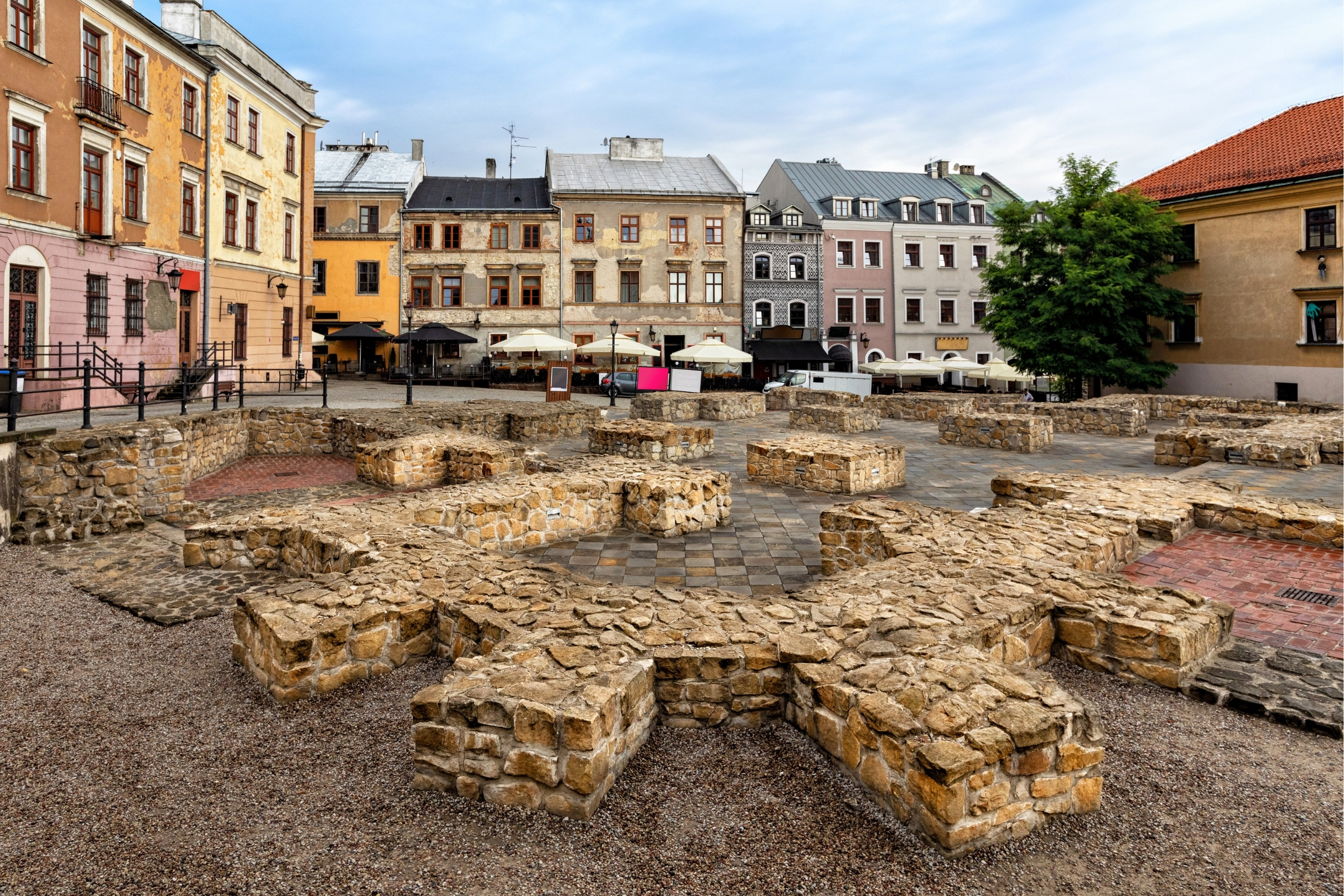
Whether there's any truth to the legend or not, the church is believed to have been built either at the end of the 13th century or at the beginning of the 14th century. However, the church was notoriously prone to fires, burning down a total of three times between 1575 and 1846. After the third incident, the decision to rebuild yet again was abandoned. After the remaining structure was demolished, the baptismal font, the Michał bell from the tower and a historic plaque were relocated in Lublin Archcathedral. According to local news reports, an oak trunk was found under the naive of the great altar, which had been carefully bricked around. The foundations of the church were allegedly too difficult to demolish, some say because of the holiness of the site and Saint Michael's influence. The site became properly established public space in 2002. In the 21st century, Po Farze Square is frequently used for events, such as concerts and cultural meetings. The yellow building at Grodzka 11 is a Youth Centre that once operated as an orphanage for Jewish Children until the devastating events of the Nazi Holocaust.
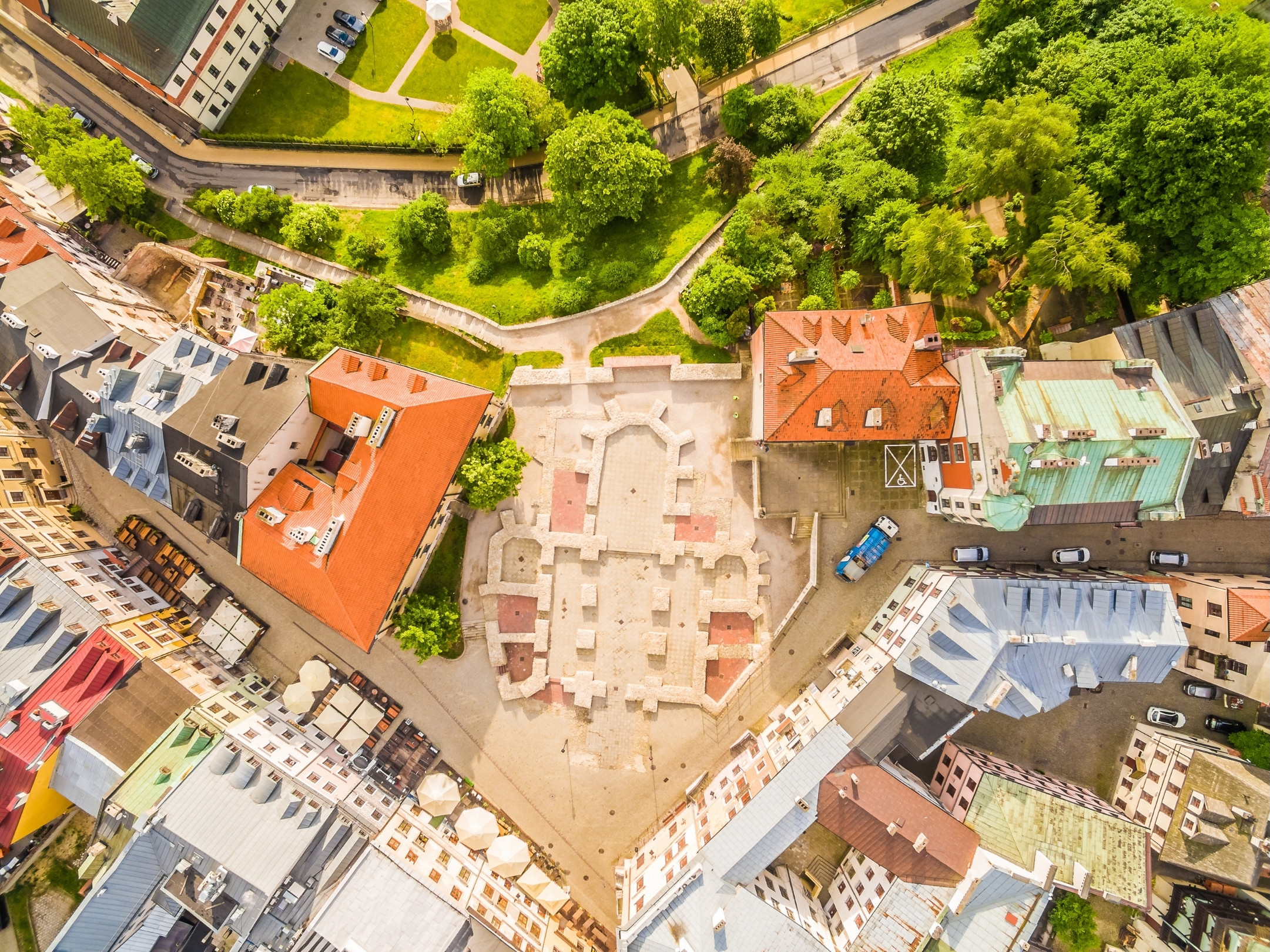
Grodzka Gate
Playing back door to Krakowska Gate's front door, Brama Grodzka (ENG: Fotress Gate) was used to guard the passage in the city's defensive walls. It was also a link between the Christian and the Jewish city, which is why it was often called the "Jewish Gate". Originally built in the 14th century, it had the form of a quadrilateral with a cupola, with a foregate later added (as it was with Kraków Gate). At the end of the 18th century, at the behest of the Good Order Commission (Boni Ordinis), it was rebuilt in the classical style and stripped of any defensive features. This is evidenced by the date MDCCLXXXV and the SAR monogram (Stanislaus Augustus Rex - Stanisław August Król), placed on the gate from the Old Town side. After 1944, the Gate was used by the Secondary School of Fine Arts, then by the Lublin Theater Studio. Since 1992, it's been the premises of the Grodzka Gate - NN Theater Centre, inside of which a model of the Jewish district in Podzamcze (now where the nearby ground-level park and car parking area is located), showing its appearance before World War II. Aside from street performances and buskers, nearby are several boutique shops and galleries.
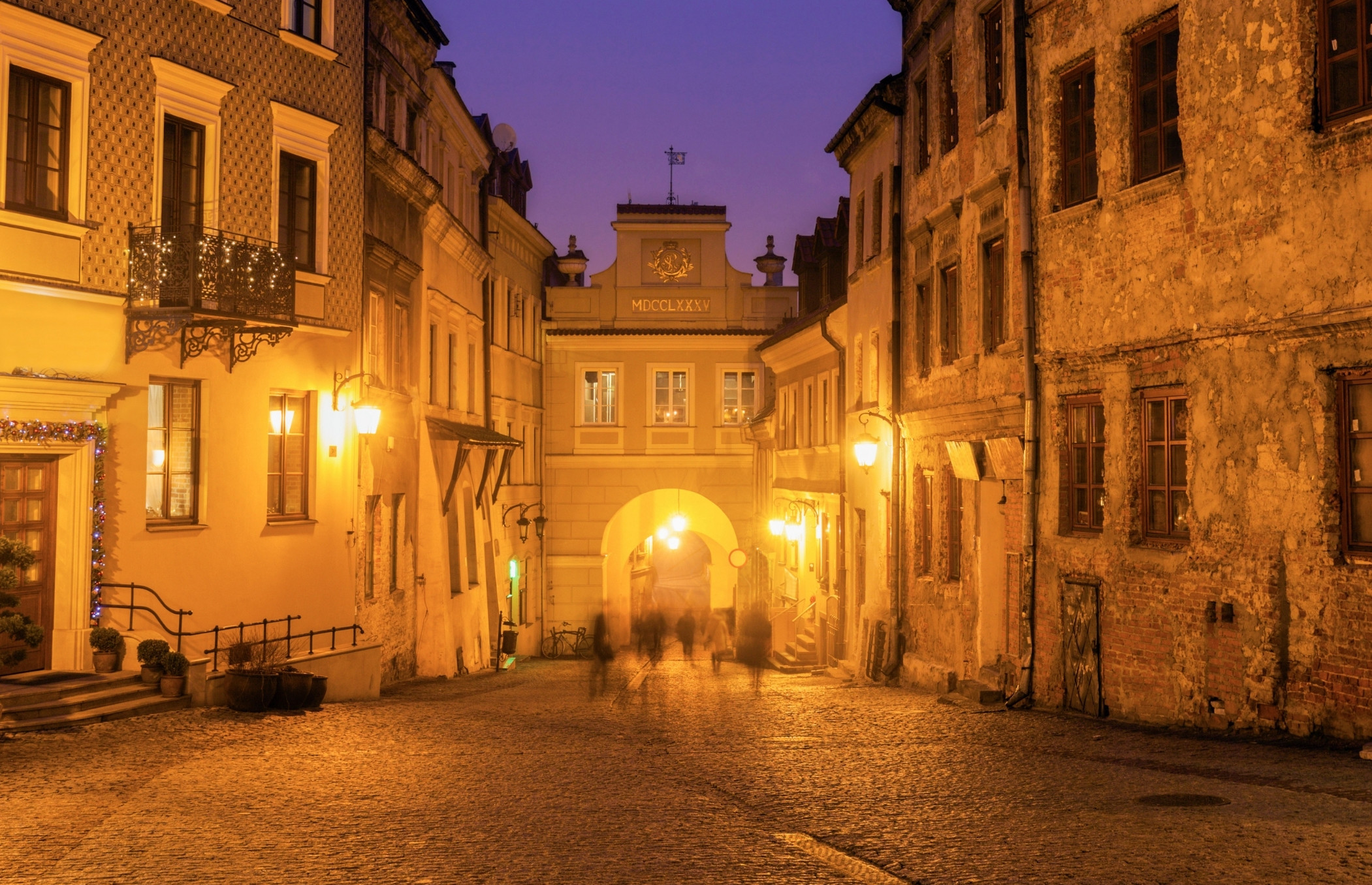
Lublin Castle
Resting upon the hill across from Lublin Old Town like a huge wedding cake, the original fortifications that stood here were constructed in the 12th century, with the Romanesque donżon tower going up in the late13th (this structure is the oldest remaining in the castle complex). The castle embraced stone in the first half of the 14th century, with a later structure being built in a gothic style during the reign of Casimir the Great, along with the wonderfully-painted Chapel of the Holy Trinity. It's current 'wedding cake' form dates from 1826.
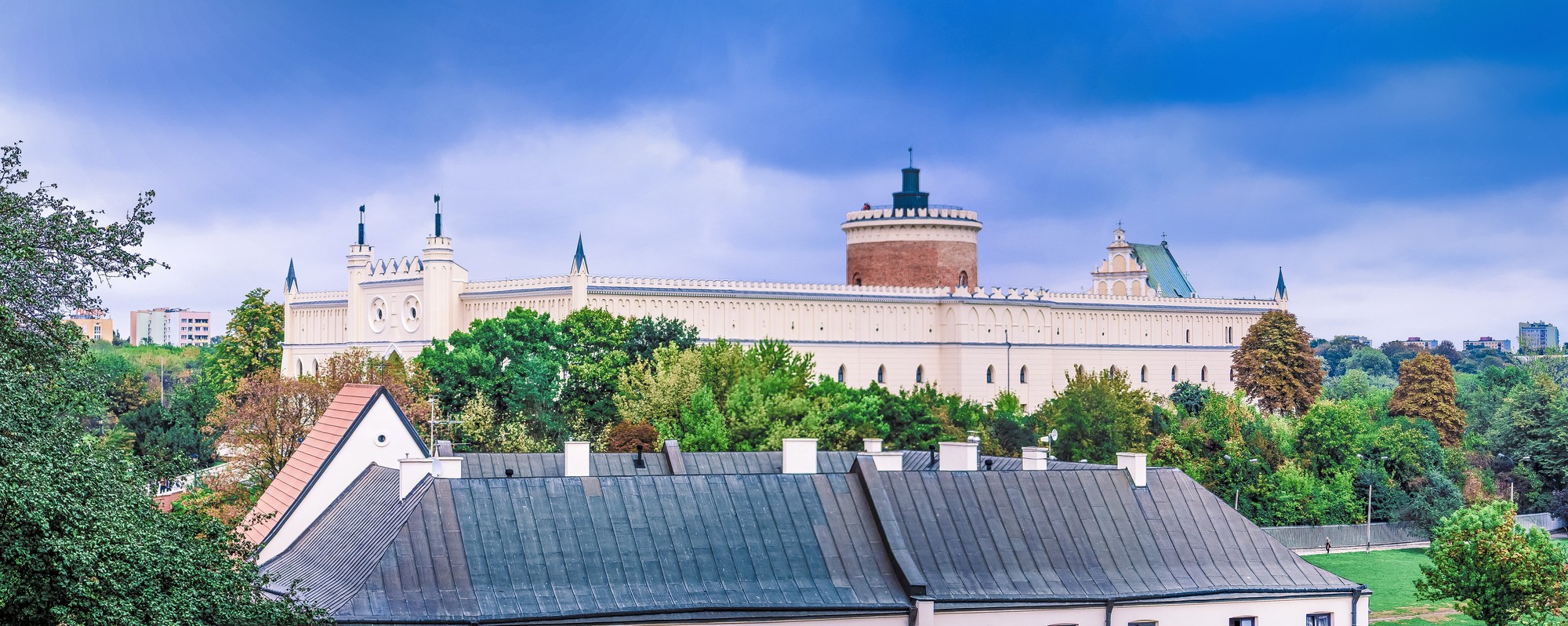

of the museum. |
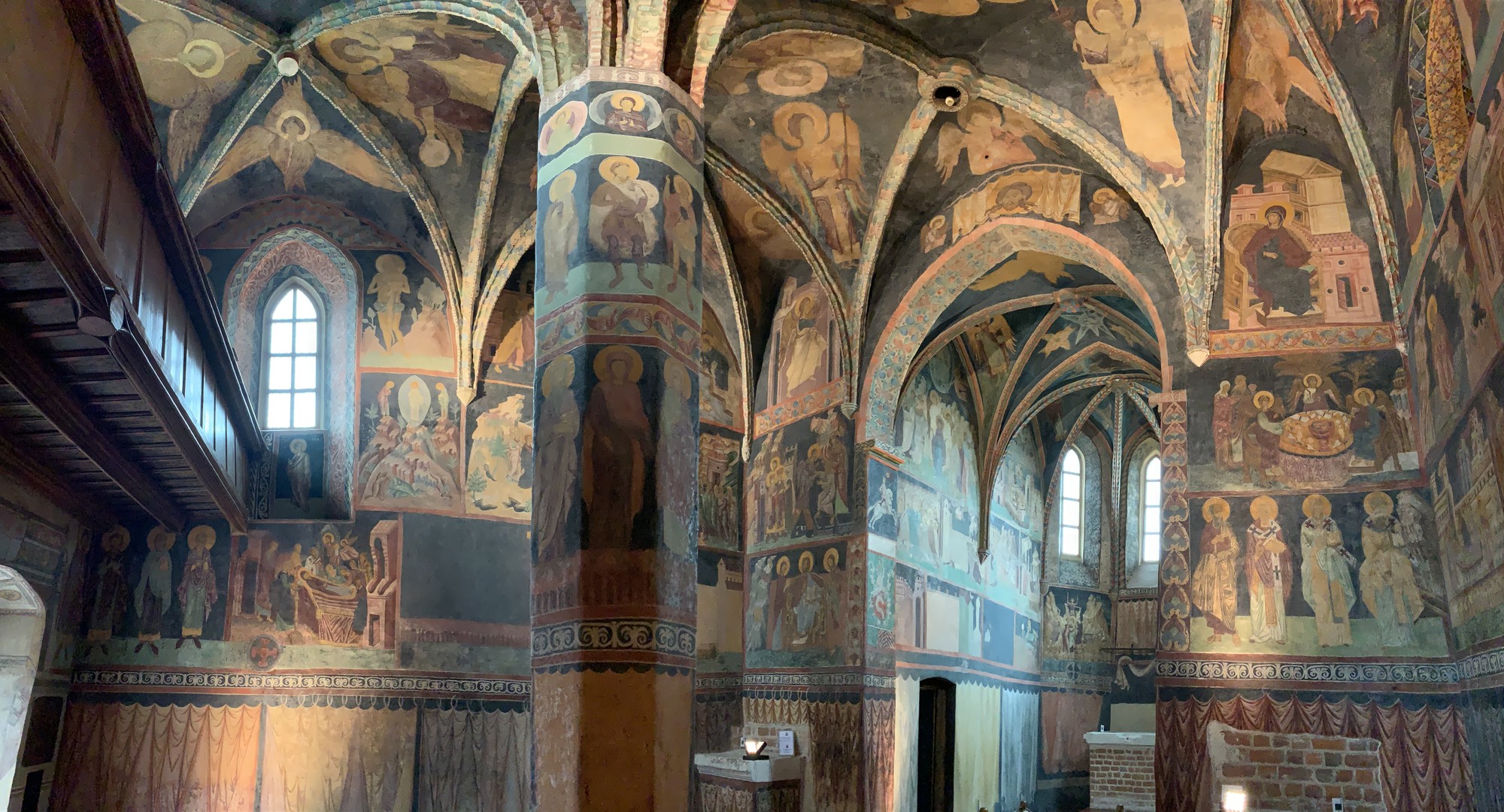
can be accessed on the museum's 2nd floor. |

on the museum's top floor |
Lublin Archcathedral and Trinitarian Tower
The Cathedral of Saint John the Baptist (PL: Archikatedra św. Jana Chrzciciela) also known as the cathedral of the Roman Catholic Archdiocese of Lublin. Built between 1592 and 1617 by the newly-arrived Jesuit Order in Lublin, it is one of the first Baroque churches in Poland. The stunning interior, painted with illusionist frescoes, and its marvelous treasury collection, are worth a moment of your time! After the Trinitarian brothers took over in 1773, the Trinitarian Tower, which now offers stunning views of Lublin Old Town, was added in 1821. Its height of 40 meters may not sound so impressive, but the panorama you can expect at the top of the tower is truly breathtaking.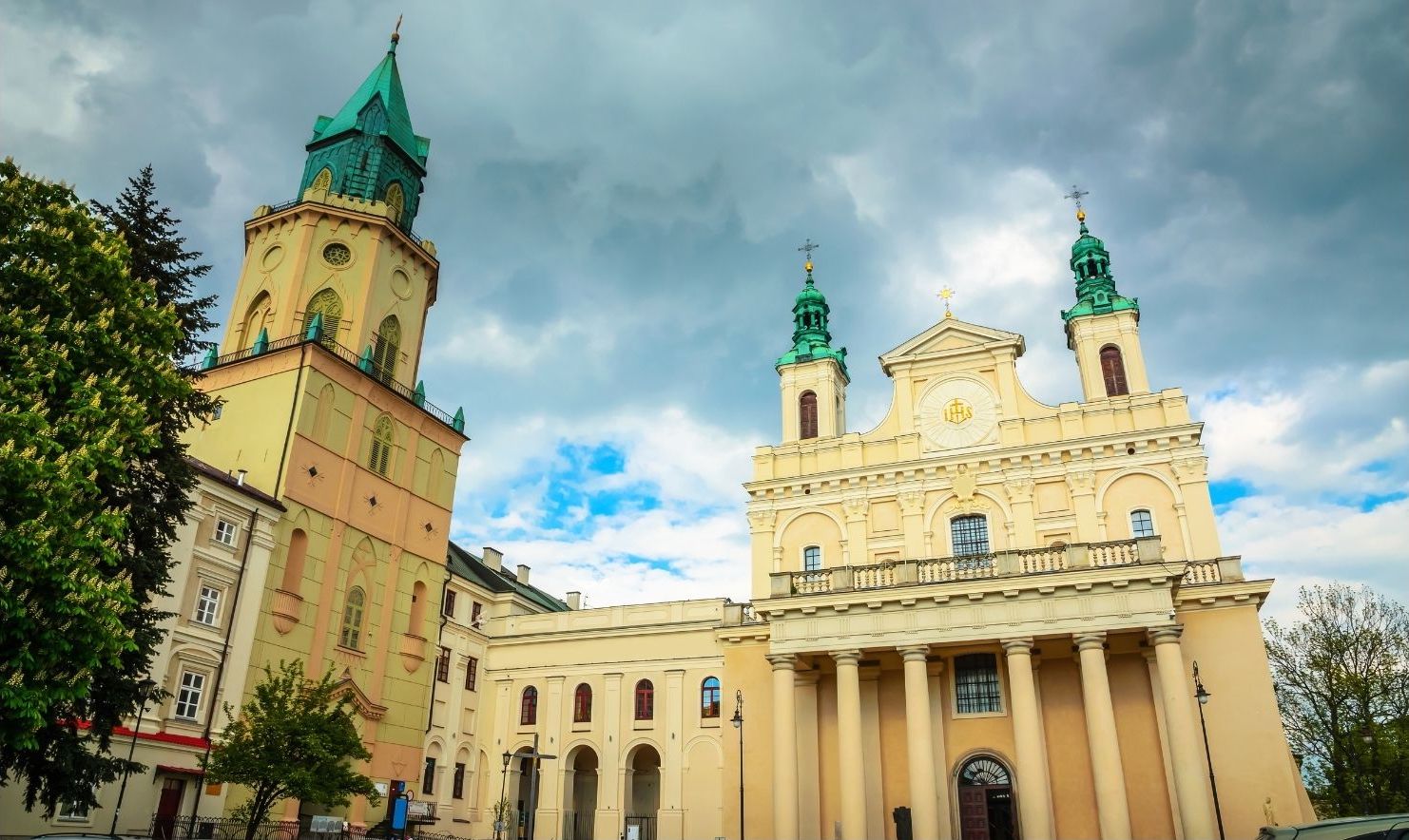
On your ascent up the tower, you can enjoy the fascinating collection of religious art in the Muzeum Archidiecezjalne Sztuki Religijnej (ENG: The Archdiocesan Museum of Religious Art). Sculptures, paintings, textiles, sarcophagi, musical instruments, candlesticks and Orthodox icons from the surrounding region hang amongst the impressive wooden support-structures of the tower's interior, complete with perfectly calibrated lighting to enhance their divine quality! At the very top, before stepping out onto the viewing deck, you can find a cozy cafe space, complete with colourful pillows and souvenirs. While you're up there, you may as well order something so that you can tell your friends that you've dined at the highest cafe in Lublin! 🐐 Back on ground level and around the corner on ul. Jezuicka you can find a square stone (marked by a custom street sign) with a particularly dark legend attached to it. This was once a block for an axe-wielding executioner, and many guilty parties lost their heads on this corner. However, one day, an innocent man was laid on the block and the axe came down with such force that it left a mark in the stone. From that day onwards, the stone brought death to anyone who touched it. Most notably, a woman carrying soup down the street accidentally tripped and spilt it on the corner, after which a pack of local dogs strolled by and licked up the mess. All of them keeled over and died, an event which earned the area the name 'Dog hill'!
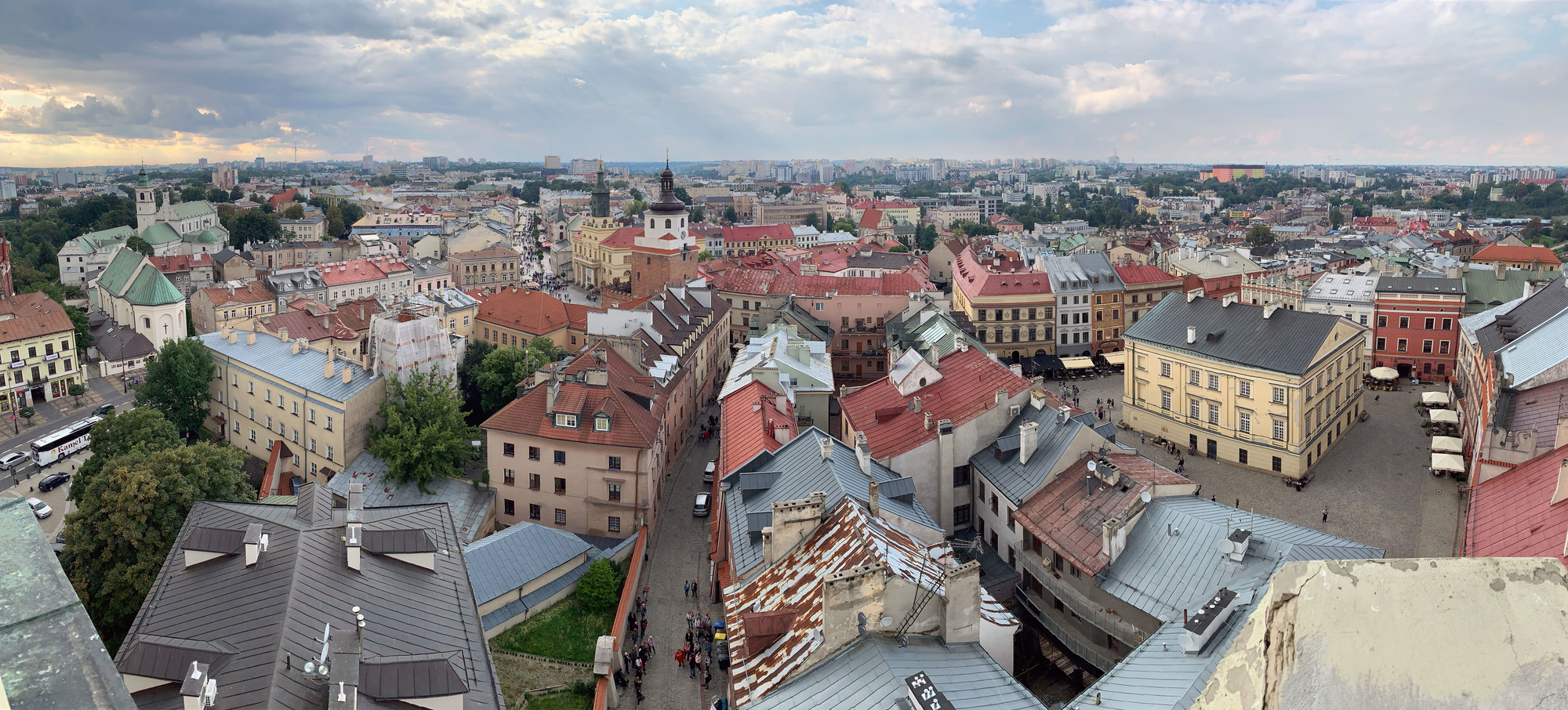
Dominican Basilica & Monastery
Basilica of St. Stanislaus (PL: Bazylika św. Stanisława Biskupa Męczennika w Lublinie) also known as the Dominican Church of Lublin is one of the oldest places of worship in Lublin. Together with its adjoining monastery, it is one of the longest existing institutions in Lublin, being more than 750 years old. The Dominican monastic order had been in Lublin since the 1230s and they occupied the original premises from 1253. However, the church as it stands today was built around 1342 under the patronage of Kazimierz the Great.

🐐 The Dominican Basillica was previously the site of an original piece of the Holy Cross, a relic that was brought to Lublin in the 15th century. Escorting Bishop Andrzej of Kiev is said to have only stopped at the Monastery for the night while transporting the relic further east. However, for the next two days, his horses refused to move any further, and thus he took it as a sign that this fragment of the holy cross should remain here. Aside numerous miracles of healing, fire fighting and fending off Cossacks with angels descending from the heavens, a thief is said to have made off with the relic, only to discover that his horses also refused to move. So where is the relic now? Well, in 1991, someone did successfully steal it, though many local residents believe that it still remains somewhere in the city (because God refuses to let it leave the city!) Aside its holy prestige, the most interesting point inside of the basilica is a fantastic painting of Lublin in the 16th century, with a small detail depicting the start of the aforementioned fire. Whilst it is uncertain where the source of the fire came from, the painting shows the culprit as a burning schoolhouse in the center-foreground with a young boy joyously celebrating the fact!
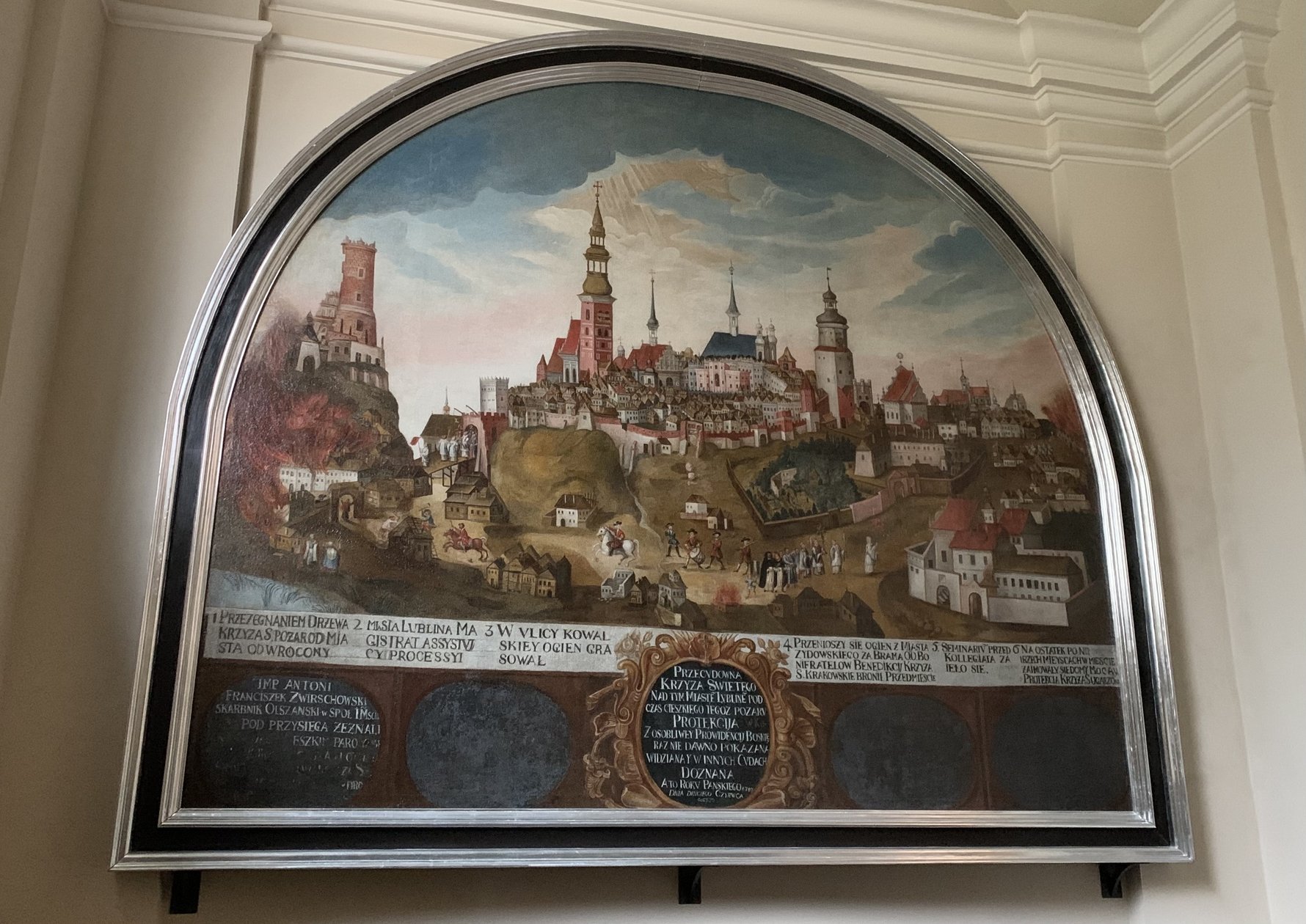
Underground Trails and Subterranean Brewery
One of the more obscure tourist attractions (but no less popular) in town is the Lublin Underground Trail that runs under the Market Square and tenement houses of the Old Town. With a total length of approximately 280m, the route was created as a result of joining a dozen of numerous historic cellars together, some back to the beginning of the 16th century. The history of Lublin's spatial development is presented in an exhibition consisting of a series of models showing the settlement in the area of the present city, from the early Middle Ages (8th-10th century) to the 18th century. The climax of the underground story is, enriched with light and sound, a moving model of the Great Lublin Fire (1575). Lublin Underground Trail starts at the Crown Tribunal Building in the centre of the Rynek. Due to its popularity, booking at least a week in advance is highly recommended!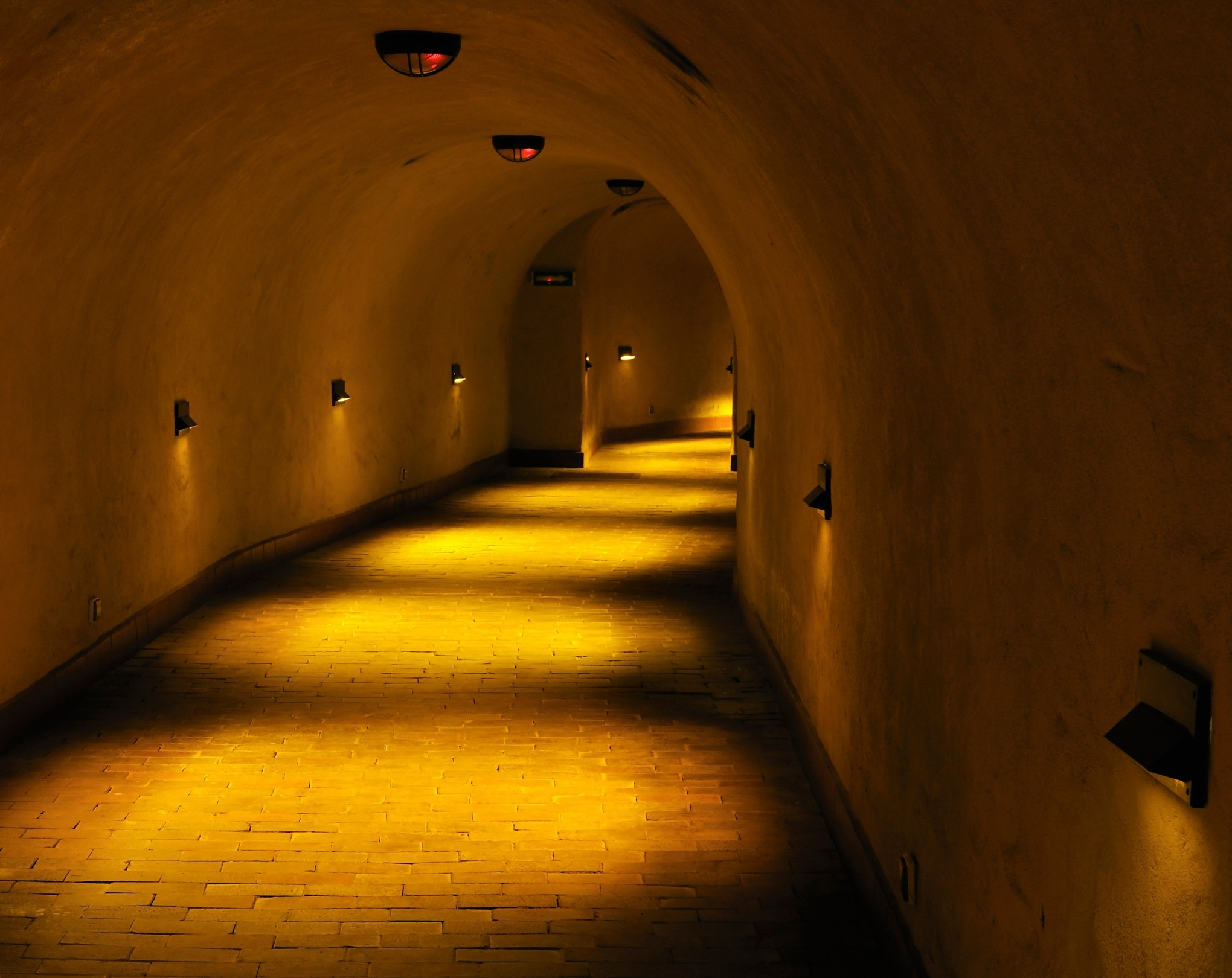
A short work south of the old centre is another underground experience, this time with beer in the equation! Lublin's Browary Lubelskie was founded in the abandoned ruins of a monastery in 1844, better known by its famous brand of beer - Perła. Every tour in the 'Perła Brewery Undergrounds' has the option of ending with a beer tasting session at their subterranean bar space! Their ground level operation is equally as popular with locals as it is with tourists, and is a great option for spending a night (or day out) with friends!
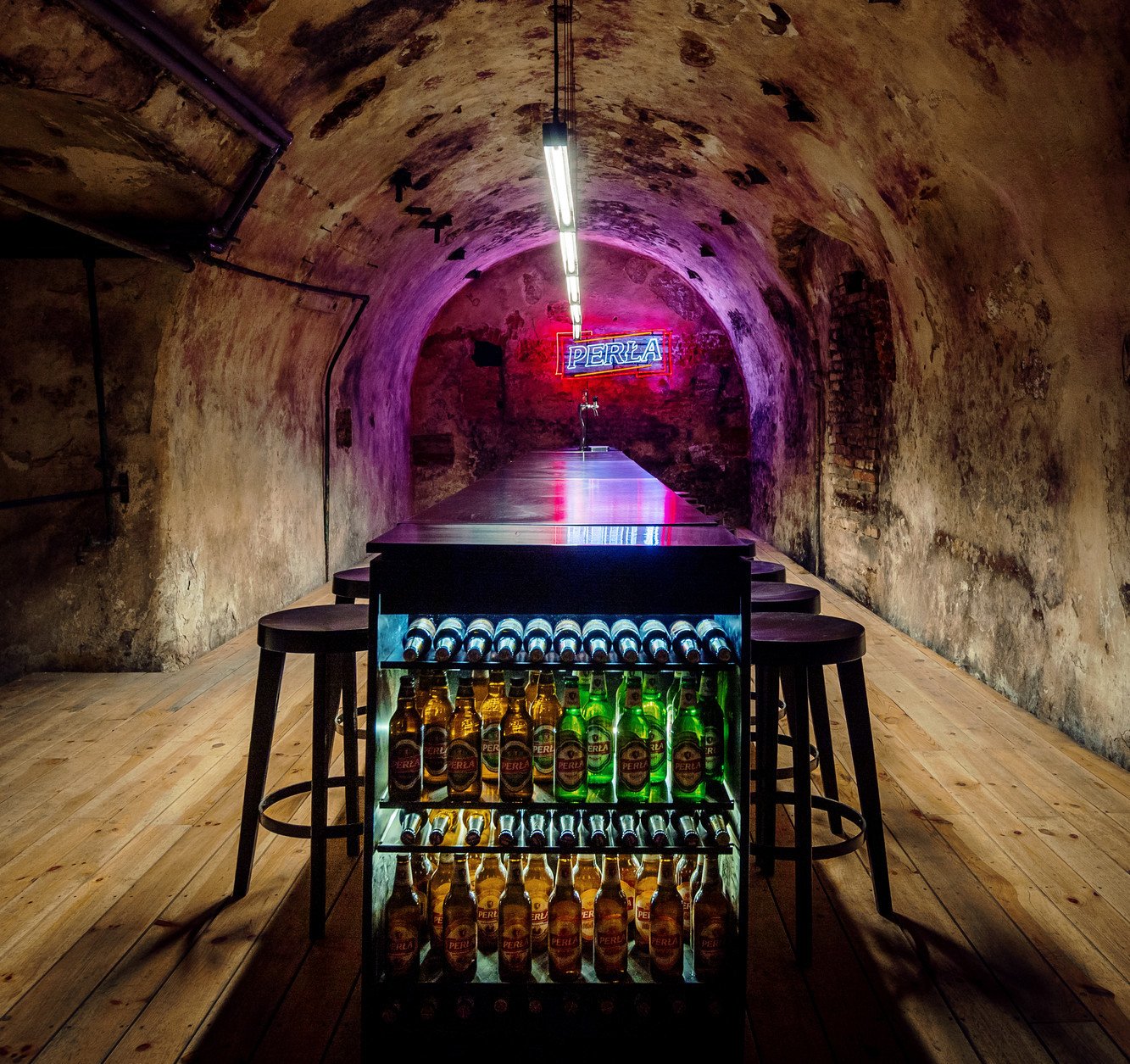
Majdanek Concentration Camp
The destruction of the Nazi regime across Europe in WWII has been extensively documented, and Poland was the focal point for many of the worst atrocities ever committed in human history. Of the numerous concentration camps that operated in occupied Polish territory, Konzentrationslager Lublin, known locally as Majdanek, was one of the biggest and operated a mere 4km from the historic centre. From October 1941, the site first held Soviet POWs who had been captured during the initial phase of “Operation Barbarossa” - Hitler's invasion of the Soviet Union. However, the camp was expanded to take on Jews, Poles and other ethnic groups, of which some 150,000 individuals would be moved through its facilities. An estimated 78,000 would never leave, murdered in the gas chambers, during mass executions, or perishing from starvation, diseases, or during forced labour. A visit to Majdanek is essential in gaining a better understanding of what exactly these people went through, and how xenophobia and intolerance can evolve into the highest disregard for human life. This is perfectly encapsulated by the Mausoleum with the victims’ ashes and a message engraved on the front:Los nasz dla Was przestrogą
Let our fate be a warning to you
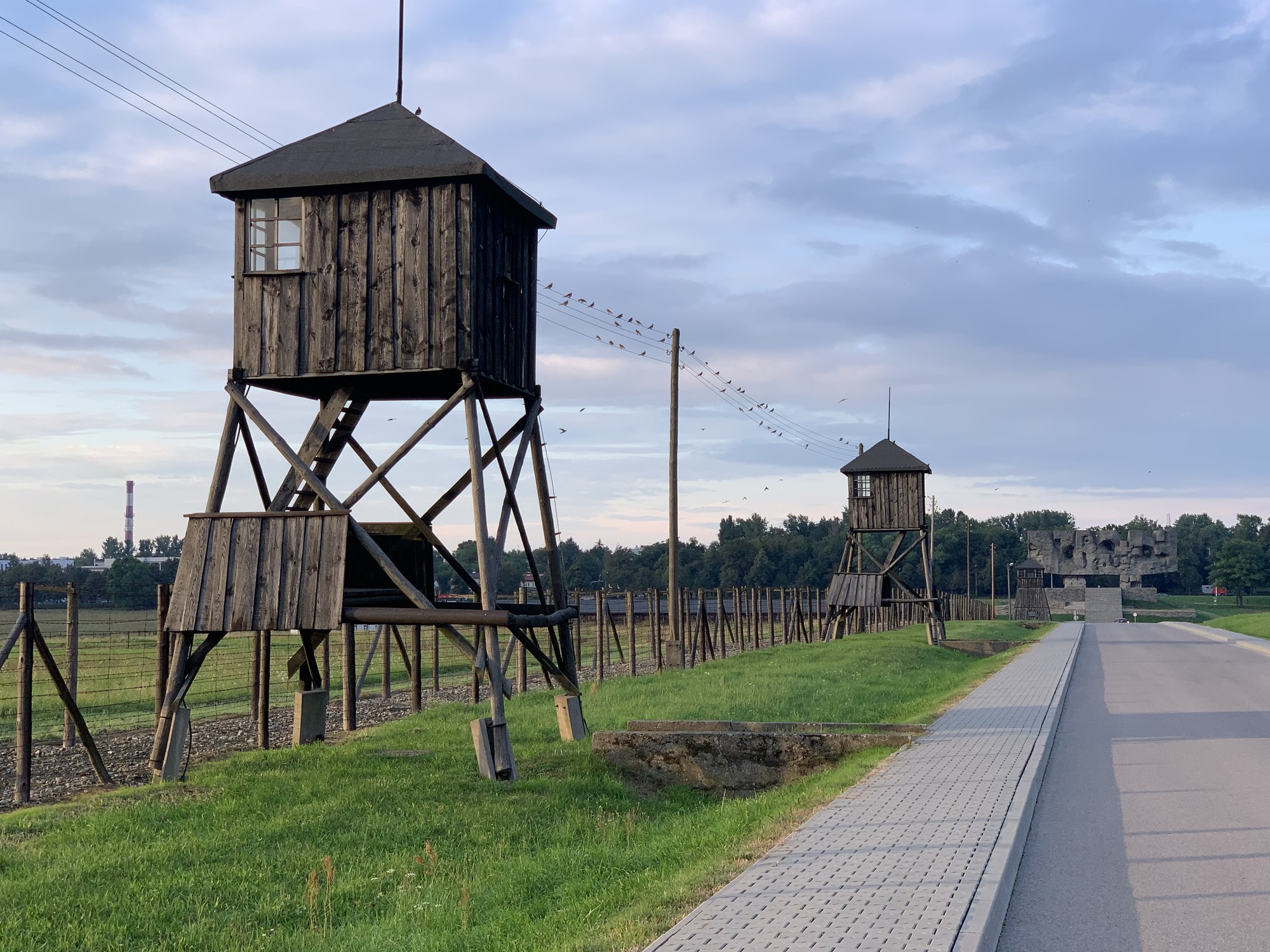
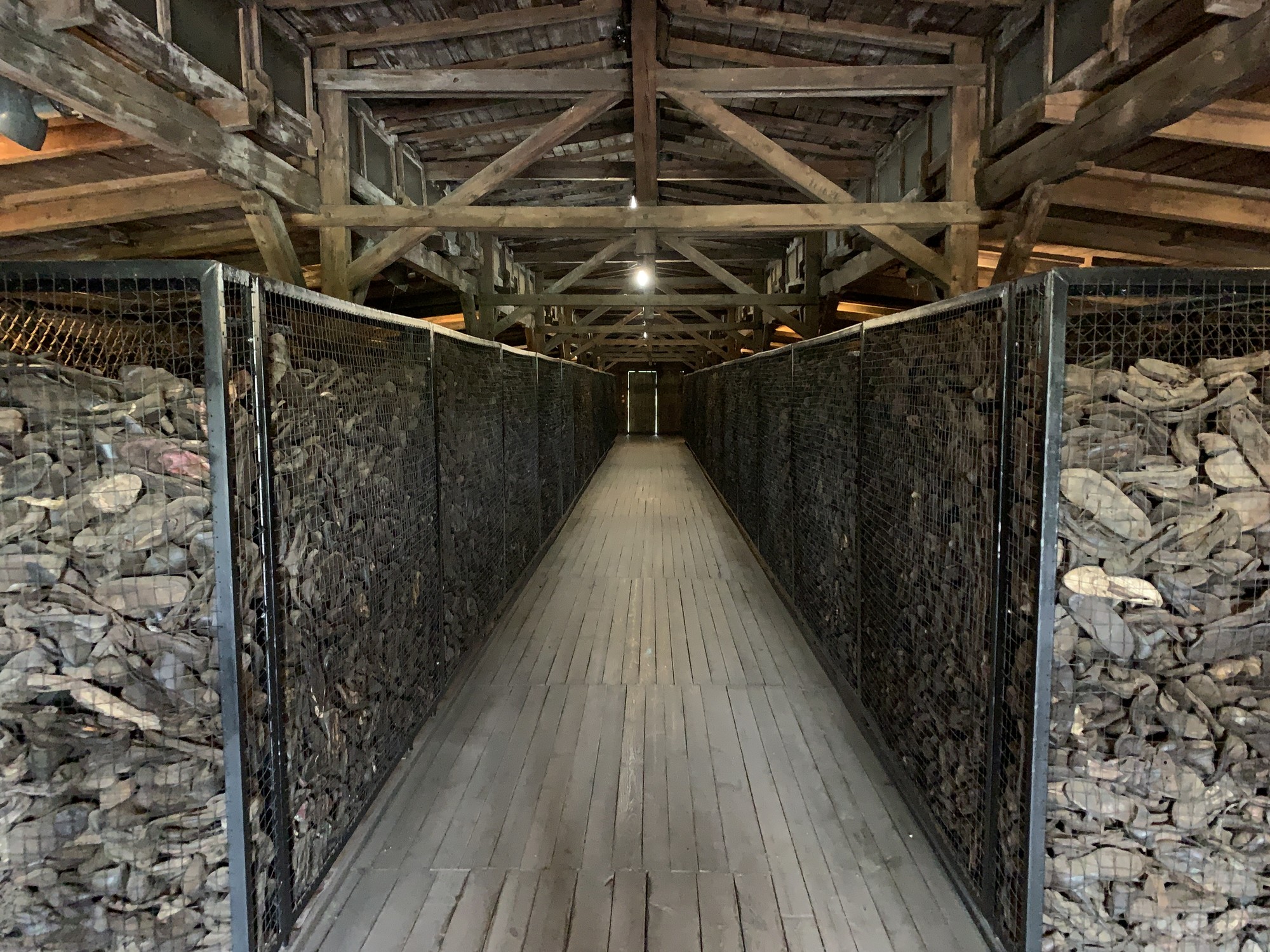
Old Jewish Cemetery
Situated on a hill 1.5km north-east of the Old Town, the city's Old Jewish Cemetery goes beyond just being the resting place of Lublin's early Jewish population. The grave of one Jakub Kopelman, who died in 1541, is the oldest Jewish tombstone in Poland that is still in its original place. The cemetery is also the resting place of many representatives of the Lublin qahal - rabbis, scholars and Jewish leaders, such as Jacob Isaac Horowitz - the Hasidic 'Seer of Lublin'. Burials were carried out there until the 19th century, until the New Jewish Cemetery was opened. Each of the preserved matzevot (ENG: Jewish headstones) is a kind of wonderful masterpiece of stonemasonry art, despite the scarring of war. The cemetery was almost completely devastated during World War II, reduced from several thousand headstones to around 200 that remain today. Sadly, acts of vandalism and the destruction of the cemetery also occurred in the 1980s and 1990s.
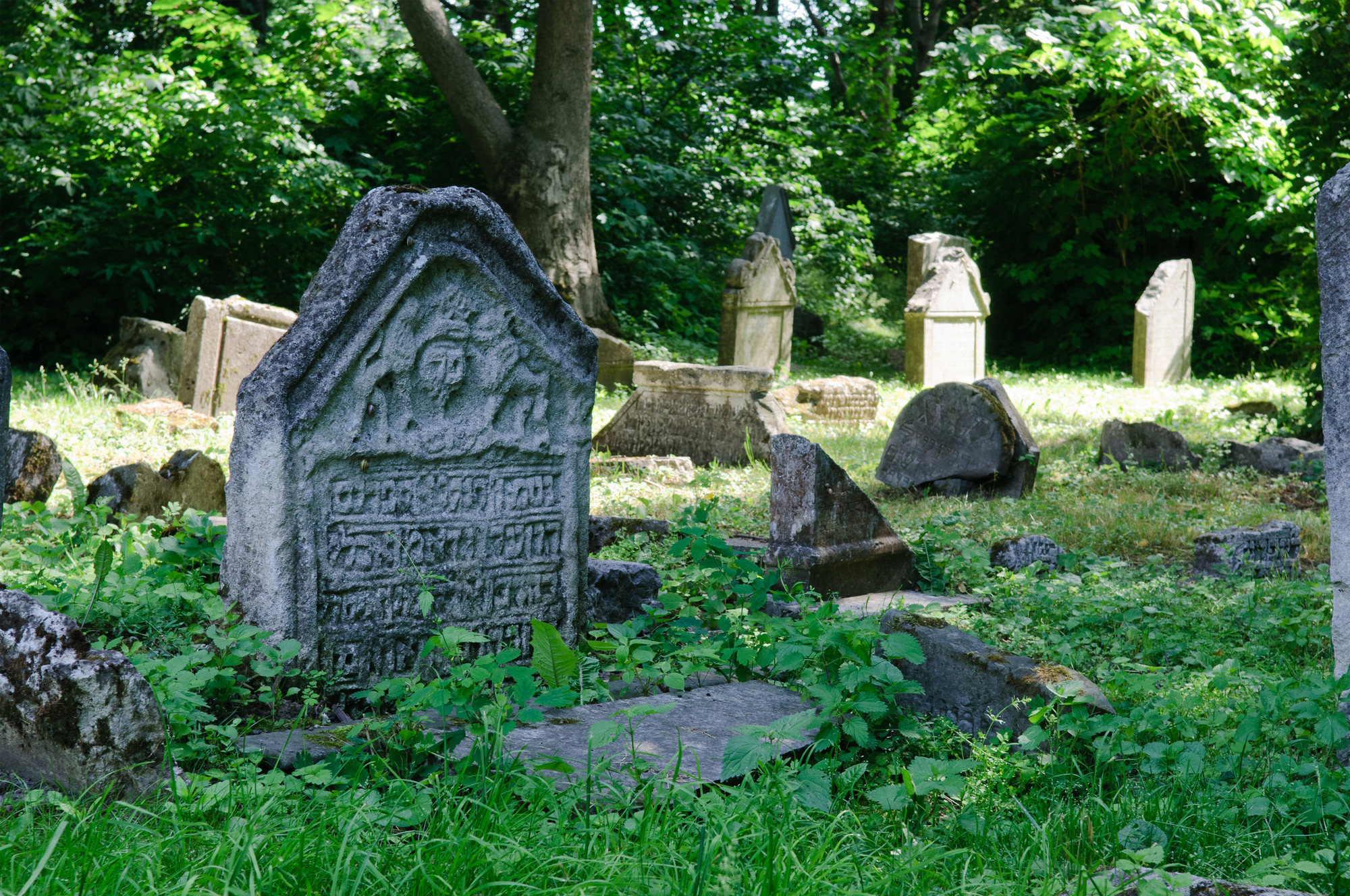
New Jewish Cemetery
Located on ul. Walecznych (near ul. Unicka), the New Jewish Cemetery has existed since 1829, with the exception of the Nazi destruction of WWII, but has since been revalorized in its new structuring. It is surrounded by a wall, shaped as a row of symbolically-damaged matzevots (ENG: Jewish gravestones). Near the entrance, a monument-mausoleum with a small synagogue houses the Memorial Chamber of Lublin Jews. In the 21st century, the cemetery is used as a burial place by the tiny Jewish community that still remains in Lublin. Other notable sights here include an obelisk commemorating the extermination of the Jews, the quarters of the Jewish soldiers serving in the Polish army in 1944-45 and an empty ohel (ENG: tent-shaped gravestone) of a grave of Rabbi Maier Szapiro, founder of the yeshiva (ENG: Orthodox Jewish seminary) in Lublin.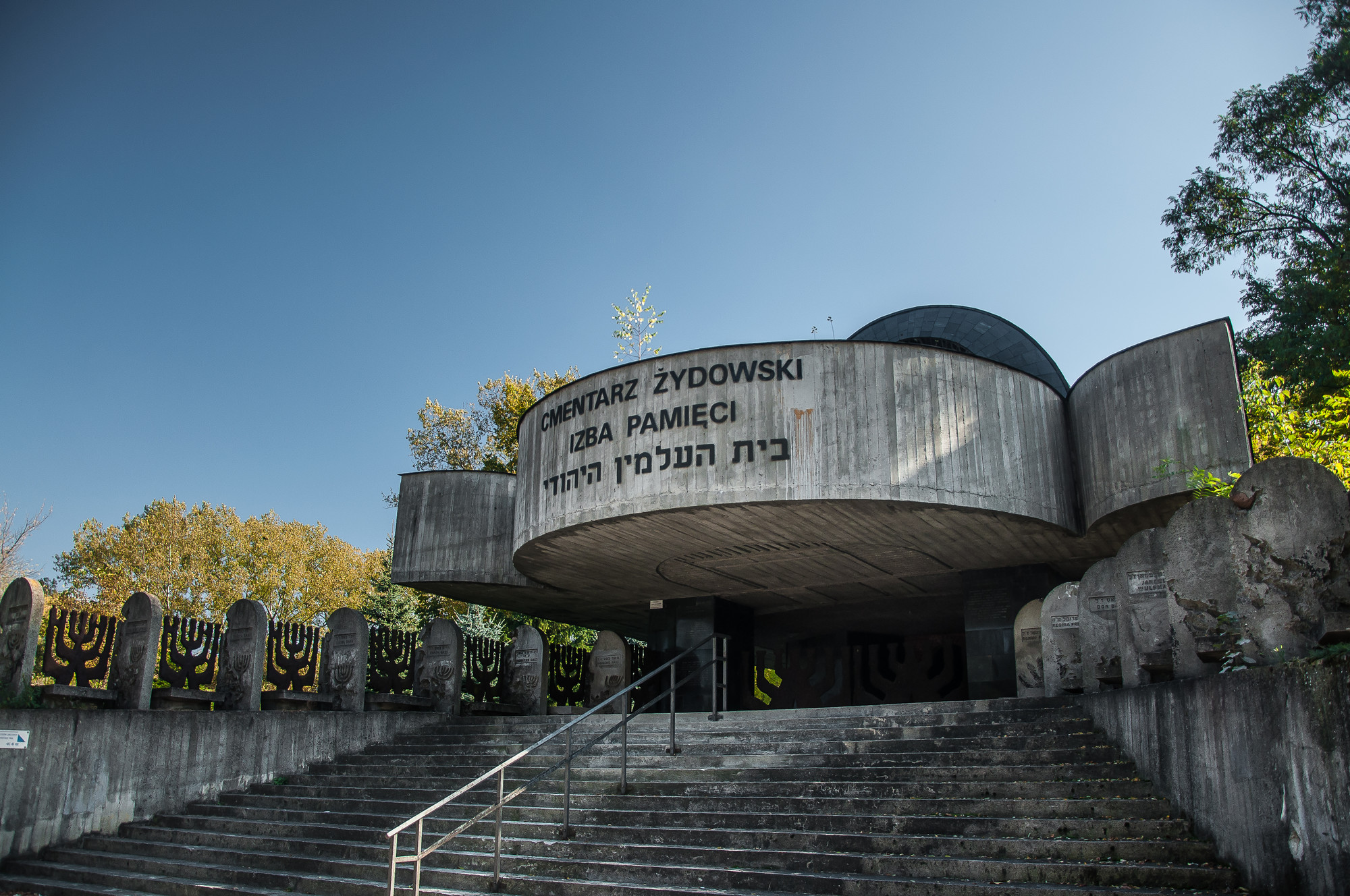
Lublin Open-Air Village
Picturesquely situated in the valley of the Czechówka River, the Lublin Open-Air Village is one of the largest open-air museums in Poland. It presents the cultural diversity of the region through a combination of architecture and exhibits that have been painstakingly collected with care for Lubelskie's intangible heritage. The museum exhibition has been divided into sectors reflecting the landscape and ethnographic diversity of the Lublin region - the Lublin Upland, Roztocze, Powiśle, Podlasie, Nadbuże, as well as various other towns and manor estates.
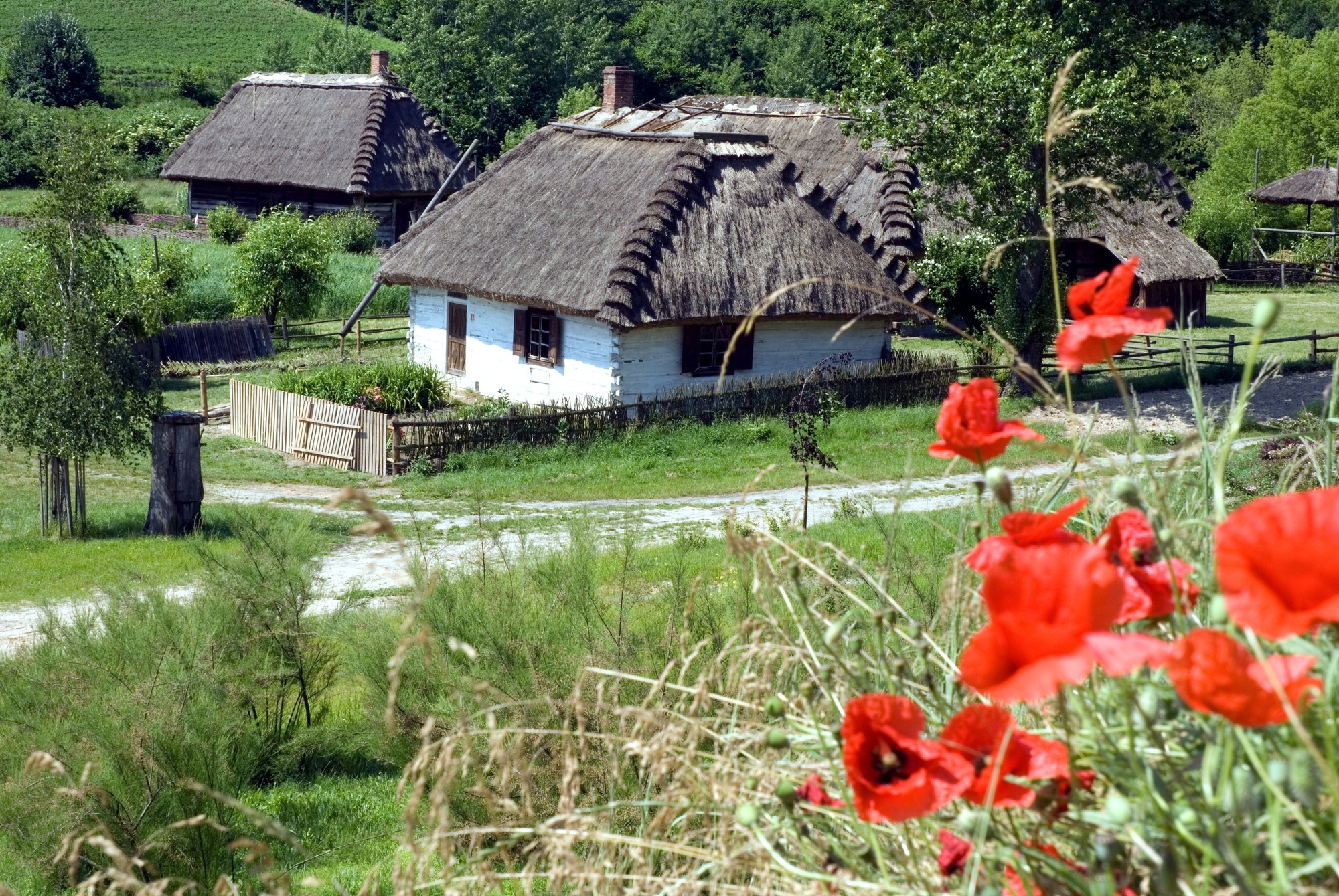
A visit to the museum is an opportunity to see souvenirs related to the former life of villages, manors and towns, but also allows you to get acquainted with the daily work, customs and traditions of people of the past era. The museum exhibition is not only a material trace of the past, but also the stories of ordinary people inscribed in the recreated interiors. It's these aspects that enhance the experience and heightens the appreciation for the human quality of each unique exhibit. When visiting successive sectors and objects, one gets the impression that time has stood still, and a visit to the museum becomes an opportunity for an exceptional journey and a close - even tangible - meeting with the past. Apart from the permanent exhibition, Lublin Open-Air Village holds temporary exhibitions, events related to the economic and ritual year of the countryside, historic reenacments, educational activities and other cultural events.
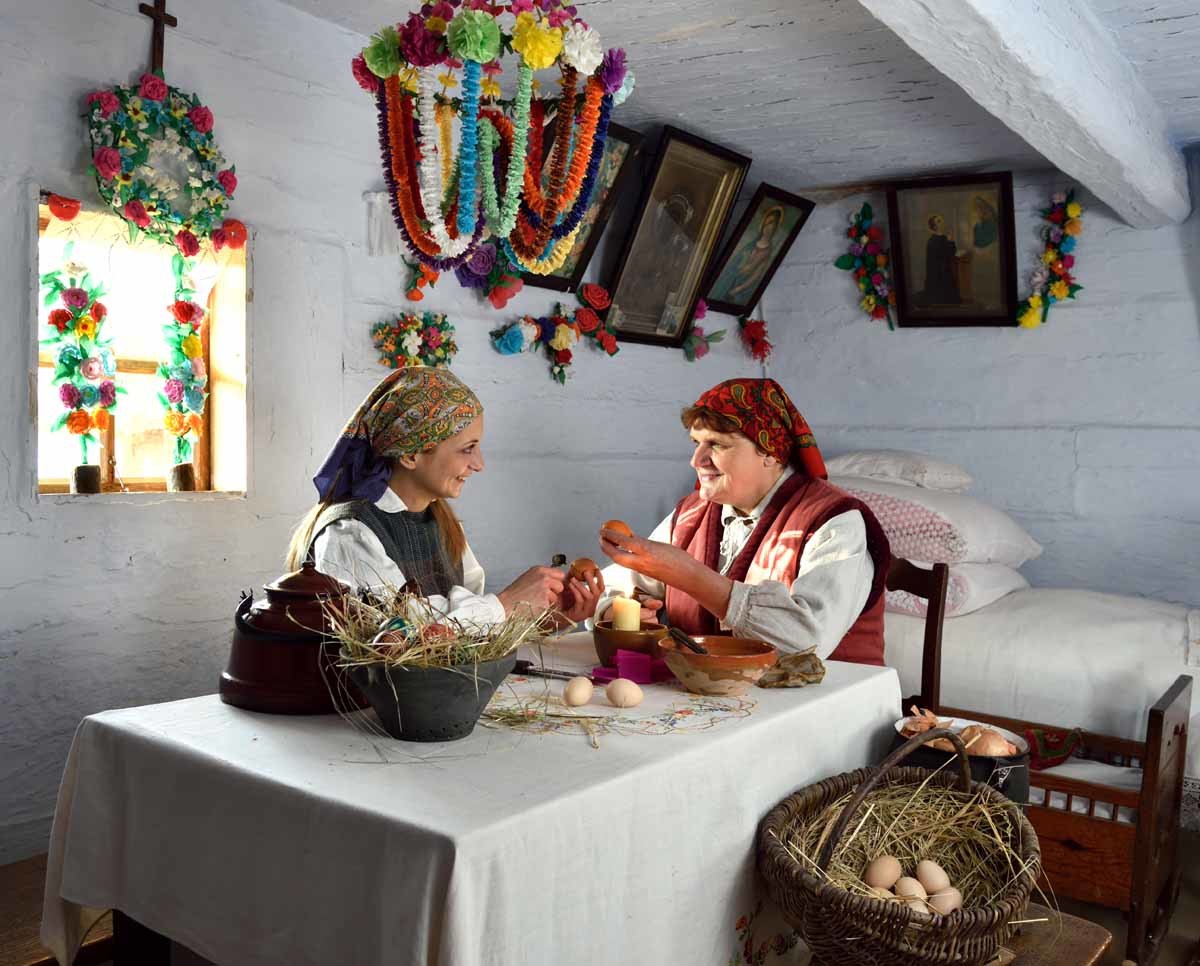
Lublin Flea Market and Farmers' Market
When Targ Pod Zamkiem (ENG: Market under the Castle) takes place on Sundays, many curious locals descend upon Plac Zamkowy, the Lublin Old Town's elliptical car park that once constituted a key part of the city's Jewish district, to browse through old antique wares and try grab a bargain. As this description probably hints at, this affair is very much a flea market, although its often referred to as a farmer's market because of its past history as a fresh produce fair in the early 90s. While it promotes itself as an 'every Sunday' event, the event is notoriously infrequent, and often doesn't appear for weeks at a time. What we can say for certain is that it's far more common in the warmer months than the colder ones. Your best option is to keep an eye on the facebook page and try and catch it if and when it happens! These days, Lublin farmers' market, known locally as Targ na Ruskiej, is about 800m north of the old centre and is open Monday to Saturday from 7am to 1pm give or take.
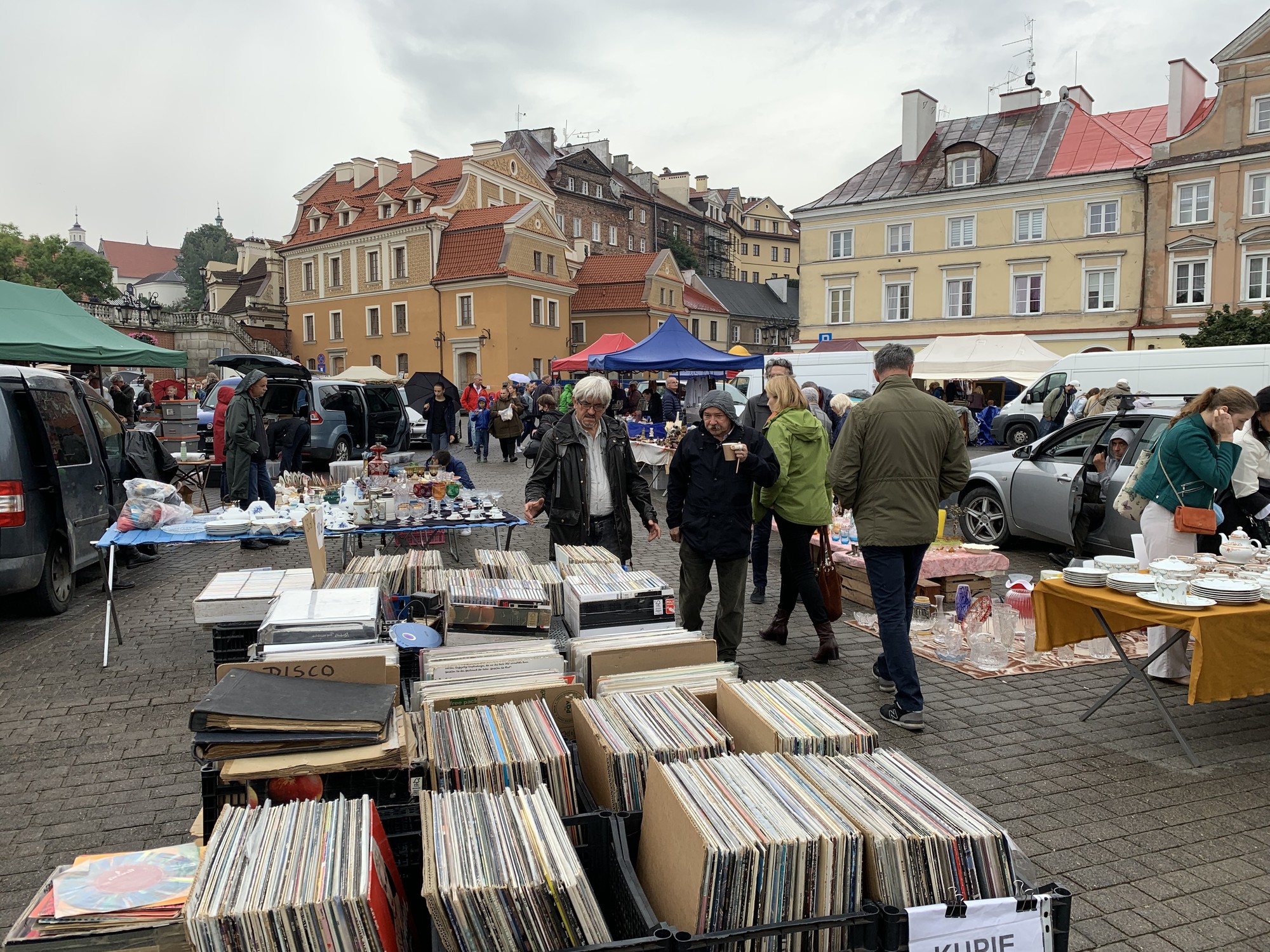
So much choice! Is it a little too overwhelming? Once you arrive in Lublin Old Town, we strongly recommend stopping by the Tourist Inspiration Centre and getting some advice from some fun and friendly locals. If you need food (for thought), check out our Restaurants & Cafes section for our recommendations of places to eat in Lublin. As day turns to dusk and the mood takes you, it'll be time to seek out the Pubs, Clubs and Bars section. At some stage, you might need to pick up a souvenir or have the urge to check out some local art showrooms. In that case, you should cruise over to our Shopping section!


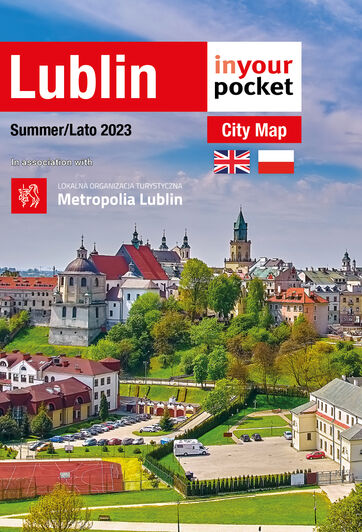
Comments